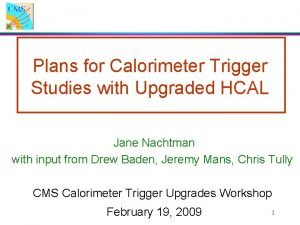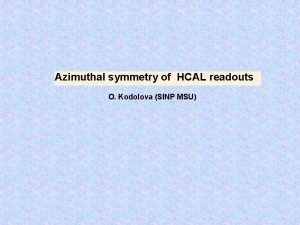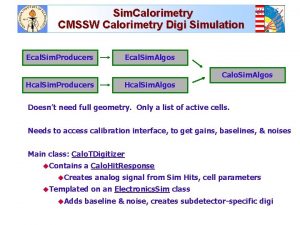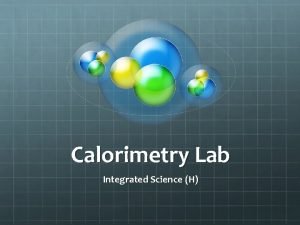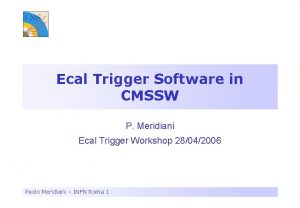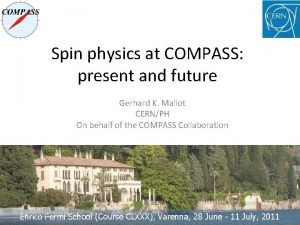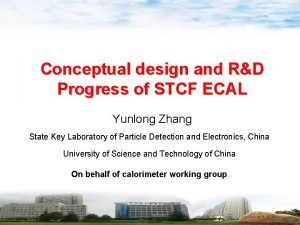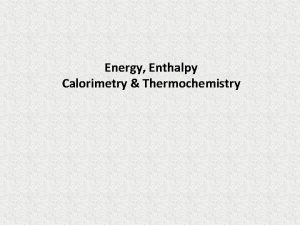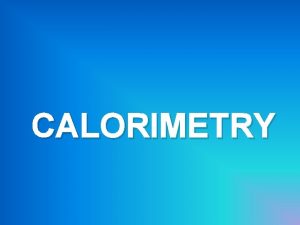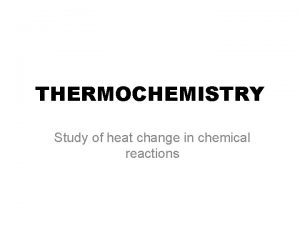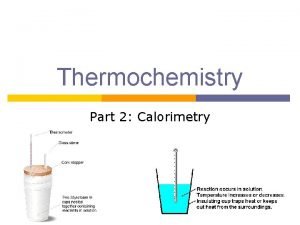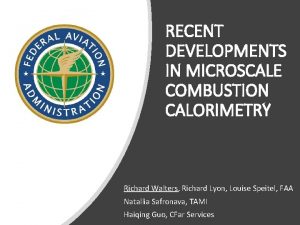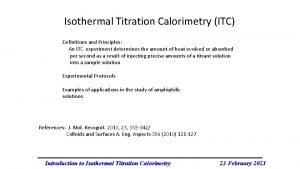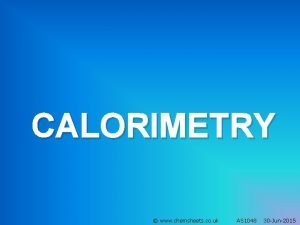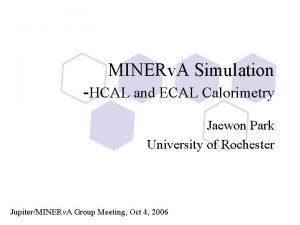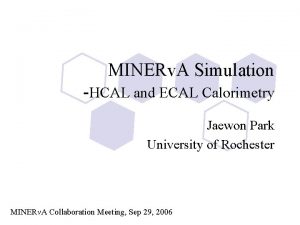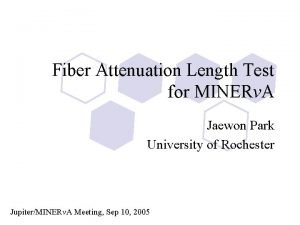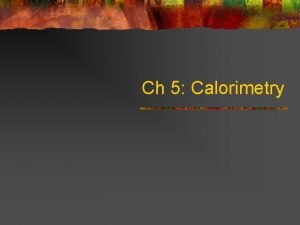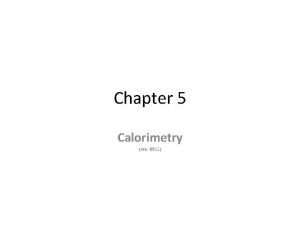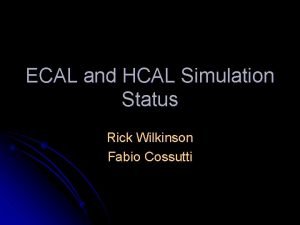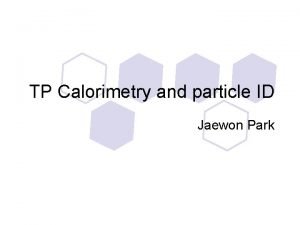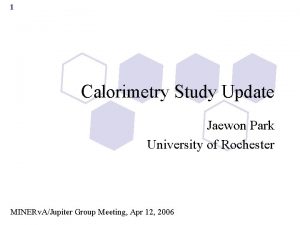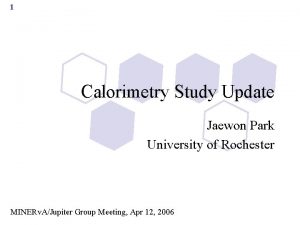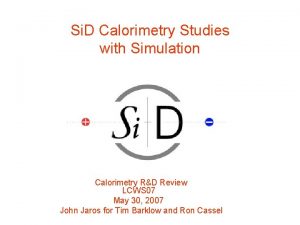MINERv A Simulation HCAL and ECAL Calorimetry Jaewon














- Slides: 14

MINERv. A Simulation -HCAL and ECAL Calorimetry Jaewon Park University of Rochester MINERv. A Collaboration Meeting, Sep 29, 2006

2 Energy Loss Calculation iron particle scint

3 Detector Logical Region Scint only ECAL HCAL Nucl. target For HCAL study, lead can be ignored l For theta=0 deg, particle will hit DS-HCAL. l For theta=40 deg, it passes both DS-HCAL and OD l

4 Theta dependence 2. 2 Ge. V proton beam is used l Need to calibrate (or correct leakage) to make mean shift flat l

5 Theta dependence l l l HCAL=OD+DSHCAL Like to know whether mean shift is effect of leakage or improper calibration Event selection for avoiding MIP-like event makes theta dependence more complicated

6 Infinite OD l With infinite OD, there will be no leakage to OD l Original OD + 5 cm x 19 layers

7 Guessing leakage from extended OD layers l l Extended OD layers: 5. 72 cm x 3 + 11. 43 cm + 5 cm x 19 layers With extended OD geometry, leakage is eliminated. Mean shift got flatter but not completely flat New OD calibration might make mean shift flat.

8 Relative calibration for OD layers E id and E hcal from extended OD looks complementary shape l Leakage energy is acquired from extended layers l Relative calibration constant for OD can be estimated using the fact total energy should be constant l a=1. 3 seems best value

9 OD calibration: Applying to actual geometry Mean shift got better. Resolution increased a little bit. It’s unavoidable. Same for leakage correction l Our model for leakage correction l ¡ ¡ Simple leakage correction can be based on interaction length Want to parametise leakage as function of interaction length

10 Slot optimization orig 5. 72 11. 43 17. 15 45. 74 v 1 5. 72 11. 43 45. 73 v 2 5. 72 11. 43 5. 72 45. 73 v 3 7. 63 11. 43 45. 75 v 4 5 7. 385 9. 77 12. 155 11. 43 45. 74 l OD v 2 is not practical ¡ l Too thin most outer layer OD v 4 would be best

11 ECAL -Overview l Preliminary ECAH study ¡ Electron beam is used. (Previous HCAL study uses proton beam) Looked at Energy dependence, Vertex Z dependence, theta dependence l Try to find calibration constant for ECAL l ¡ Here, ID means pure plastic scintillator b and c is calculated from d. E/dx weighting. (b=1. 75) After some tries, ECAL calibration factor b=2. 5 gives better resolution than 1. 75 l 2. 5/1. 75=1. 43 l l

12 DS-ECAL Energy and Vertex Z dependence l l Vz = 0 cm Theta=0 deg l b=2. 53 makes mean shift flat 1 Ge. V electron beam Resolution is better when ID/OD is high l b=2. 51 makes mean shift flat l l

13 Barrel ECAL Theta dependence l l E=1 Ge. V, Vz = 0 cm Theta=0, 10, … 50 deg b alone can’t make mean shift flat 2. 5 times OD calibration factor seems to mean shift flat but made resolution twice

14 Thicker ECAL l l 4 mm lead gives ~20% decrease on resolution 3 mm lead gives ~10% decrease on resolution

